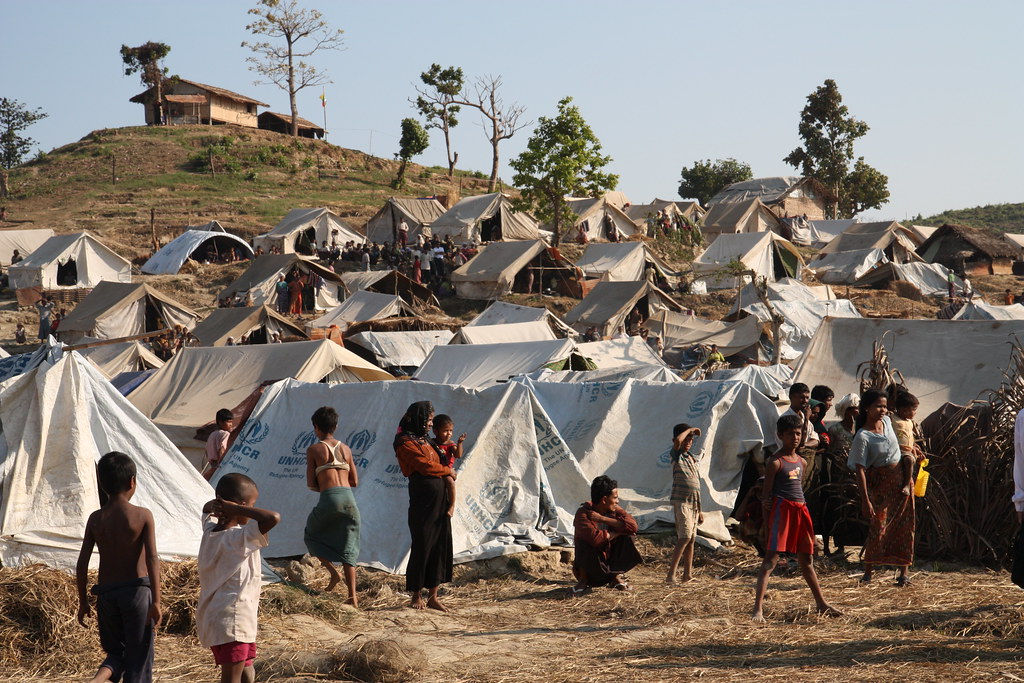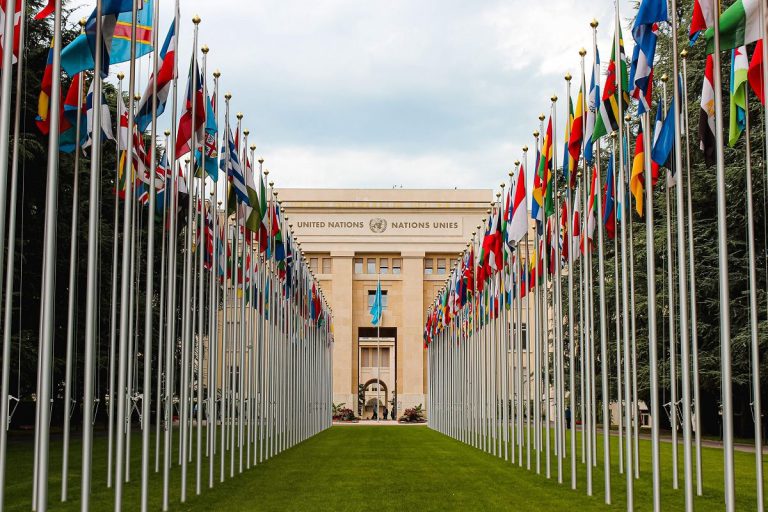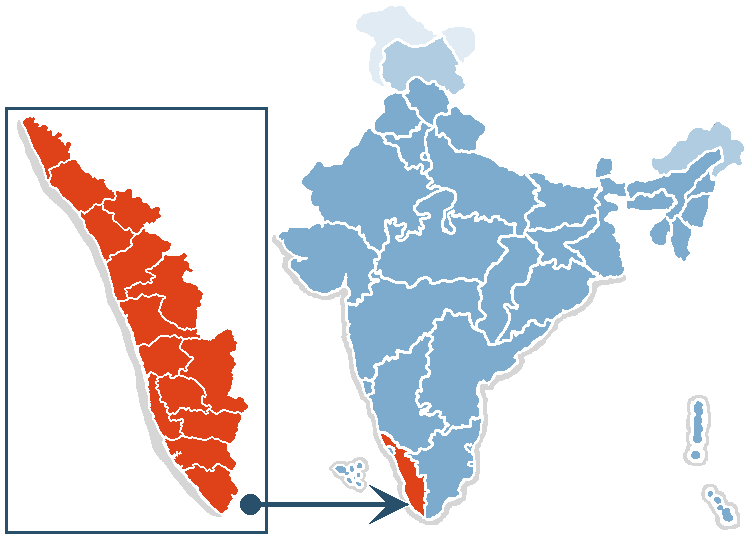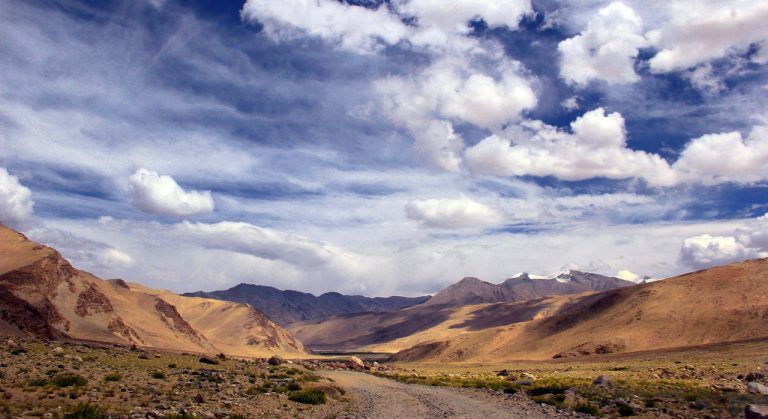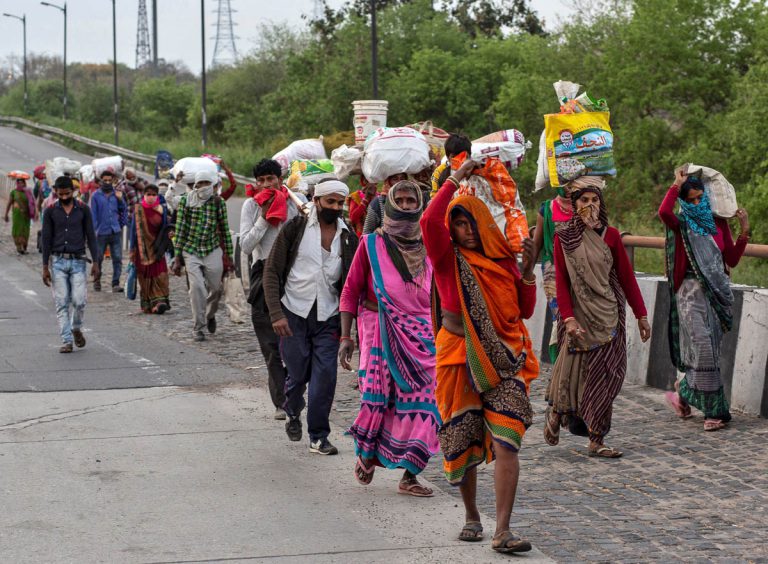Role of the State in Development
Raagini Sharma has just completed her Master’s in ‘Conflict, Governance & Development’ from the University of York, U.K.
For the last few decades, there has been a shift in thinking that has transformed the idea of ‘Development’ to the concept of ‘Sustainable Development’, that is, growth and development in all its forms but in a manner that can be maintained in its perpetuity with its holistic approach and carefully, cautiously and purposefully choosing options to offer the best net long term results. Sustainable Development Goals (SDGs) as set by the United Nations and adopted by its member states in the year 2015 provide a holistic and multidimensional view on development. The UN has set the ‘Agenda 2030’ to include the SDGs to transform the world by ensuring human well‐being, economic prosperity, and environmental protection (United Nations General Assembly, 2015) through achieving 17 goals and 169 targets (Transforming Our World; the 2030 Agenda for Sustainable Development). All member nations of the UN have a time schedule and different strategies to accomplish this cause for humanity. Each state is required to implement schemes and programmes which are well thought through at the national level and implemented at the subnational level to realise the goals.
The role of the State is crucial in achieving development. The veracity of this statement will be adjudicated with a ‘Case Study of India’ as a State and how crucial it has been in achieving the SDGs as set by the UN. India has chalked out a strategy at the national level involving several players with NITI Aayog as a pivot to synergise the efforts of all as also coordinate their functions. The progress achieved till date keeping the Agenda 2030 in mind and how India steers itself to achieve the SDGs and the associated targets, will be examined through programmes and schemes employed at grassroot levels.
Agenda 2030
The Sustainable Development Goals, SDGs as these are called, are a universal call to action to end poverty, protect the planet and improve the lives and prospects of everyone, everywhere (Inclusive and Sustainable Industrial Development, 2014). The SDGs were adopted by all UN Member States in 2015 as part of the Agenda 2030 which set out a 15-year plan to achieve the Goals (Sustainable Development Goals). Agenda 2030 provides a shared blueprint for peace and prosperity for people and the planet (eGov Space). Each country has formulated plans to achieve the goals in a progressive manner keeping the time schedule in mind, however, the progress being made to meet the goals is not yet advancing with a requisite urgency and at the scale required. 2020 needs to usher in a decade of ambitious actions to deliver the Goals by 2030 (Sustainable Development Goals).
Agenda 2030 mandates that 17 SDGs and 169 related targets be achieved by the signatory countries of UN General Assembly by the year 2030. The overall aim is to help streamline development policies and actions for the higher and time bound achievement of human wellbeing. The 17 SDGs as mandated by UN are listed below-
- SDG 1: No Poverty: End poverty in all forms everywhere.
- SDG 2: Zero Hunger: End hunger, achieve food security and improved nutrition and promote sustainable agriculture.
- SDG 3: Good Health & Wellbeing: Ensuring healthy lives and promoting the well-being at all ages is essential to sustainable development.
- SDG 4: Quality Education: Obtaining a quality education is the foundation to creating sustainable development. In addition to improving quality of life, access to inclusive education can help equip locals with the tools required to develop innovative solutions to the world’s greatest problems.
- SDG 5: Gender Equality: Empower women and girls and ensure their equal rights.
- SDG 6: Clean Water & Sanitation: Ensure access to water and sanitation for all.
- SDG 7: Affordable & Clean Energy: Ensure access to affordable, reliable, sustainable and modern energy.
- SDG 8: Decent Work & Economic Growth: Promote inclusive and sustainable economic growth, employment and decent work for all.
- SDG 9: Industry, Innovation & Infrastructure: Build resilient infrastructure, promote sustainable industrialization and foster innovation.
- SDG 10: Reduced Inequalities: Reduce inequality within and among countries.
- SDG 11: Sustainable Cities & Communities: Make cities inclusive, safe, resilient and sustainable.
- SDG 12: Responsible Consumption & Production: Ensure sustainable consumption and production patterns.
- SDG 13: Climate Action: Take urgent action to combat climate change and its impacts.
- SDG 14: Life Below Water: Conserve and sustainably use the oceans, seas and marine resources.
- SDG 15: Life on Land: Sustainably manage forests, combat desertification, halt and reverse land degradation, halt biodiversity loss.
- SDG 16: Peace & Justice, Strong Institutions: Promote just, peaceful and inclusive societies.
- SDG 17: Partnership for the Goals: Revitalize the global partnership for sustainable development.
Sustainable Development & India’s Understanding
The Rio+20 outcome document highlights the role of all levels of government and legislative bodies in promoting sustainable development. It further acknowledges efforts and processes made at the local and sub-national levels, recognizes the important role that such authorities and communities can play in implementing sustainable development, including by engaging citizens and stake holders and providing them with relevant information as appropriate on all the three dimensions (Future We Want – Outcome Document, 2012).
Simon Kuznets in 1943 said, “Welfare of a Nation can, therefore scarcely be inferred from a measurement of national income” (Boushey, Heather, 2019). Human Development Index (HDI) of the 1990s sought to do just that, it brought the condition and state of human mankind to the centre stage policy discussions. With the extensive measures covering facets of economic well-being, social justice and political freedom, the United Nations Development Programme (UNDP) HDI is arguably the best indicator in determining the structural crisis and the developmental challenges the country faces. India ranks 129 out of 186 countries in terms of its HDI which indicates that there is a need for development at a huge scale for ensuring a better quality of life for the people (UNDP, Human Development Reports, 2019). While Sustainable Development is hard to measure, its directional and procedural meaning is clear. This reflects development in human wellbeing while ensuring a balance between multiple social, economic and environmental concerns (Mathur, Ajay; Shrivastava, Manish Kuman, 2015).
According to Holden, sustainable development is a combination of four parameters, HDI (minimum 0.64); ecological footprint (maximum 2.4 global hectare/capita/year), India’s ecological footprint is 1.16; Gini coefficient (maximum 40), India’s Index as on 2020 is 35.2 (World Population Review,2020) and share of renewable energy (minimum 26%) (Holden, Erling; Linnerud, Kristin & Banister, David, 2016; Pachauri, Rajendra K., pp. 84, 2014). In terms of welfare distribution and ecological footprint, India is very much within the boundaries of sustainable development.
The goals (SDGs) reflect the path that India has to take for growth and hence is a development agenda for India. Prime Minister Narendra Modi, in his speech at the UN Sustainable Development Summit in September 2015 said, “Much of India’s development agenda is mirrored in the Sustainable Development Goals. Our National plans are ambitious to the world and our beautiful planet.” To achieve these goals, India has launched many programs to make progress. Notwithstanding its scarce financial resources, relatively low per-capita income, large population and vast geographical expanse, India is determined in achieving the goals in a given time frame (United Nations High Political Framework, 2017).
India’s plan for growth has sustainable development as its core focus and it outlines various approaches to integrate sustainability into national development goals. A closer look at national development goal parameters suggests that India’s road to sustainable development could be through the rapid and urgent deployment of green technologies with a view to address the issues of infrastructure development and the enhancement of productivity and sustainability (Mathur, Ajay; Shrivastava, 2015). The Sustainable Development Plan has been taken over by Niti Aayog. SDG’s can be met only through high standards of governance at all levels (Panagariya, Arvind, 2017). India being a federal country, the two level of governments have joined hands to bring change which India needs.
The central government has sponsored schemes to provide employment, connect villages to cities through roads, build houses for the poor and offer education in the states, various sub-groups of Chief Ministers have come forward to give valuable advice to the central government on such important matters as digital payments, skill development and the Swacch Bharat Abhiyaan (Clean India Campaign). To align the SDG’s at the global level, Indian state has placed Voluntary National Reviews (VNR) at the High-Level Political Forum (HLFP, 2017) on record.
Case Study: Indian Approach Towards SDG
After the independence, India’s economic growth was mostly regulated by socialist-influenced initiatives, state-owned enterprises, red tape and lopsided supervision, collectively recognised as the “License Raj” that led the nation and its people disconnected from the global market. But the situation started to shift in the mid-1980s as India eventually began opening up its markets through economic liberalization.
There was a paradigm shift in early 1990s when India opened its doors for liberalisation and globalisation, the strategy had a significant effect on India’s economic growth. New economic reforms implemented in early 2000s enhanced the growth trajectory bringing India as an important player on the canvas of world economy.
From Development to Sustainable Development
India is now one of the world’s major economy. The holistic nature of the SDG framework implies that a large number of potential interactions across ‘17 Goals & 169 Targets’ have to be considered by policy makers (Costanza et al., 2016; Rickels et al., 2016). As quoted by Dr Rajiv Kumar, Vice Chairman of National Institute of Transforming India “the aim of the ensuing SDG Agenda 2030 is to help streamline development policies and action for the higher and time bound achievement of human wellbeing”. The common theme of these programmes has been articulated by Mr Narendra Modi, Prime Minister of India, as ‘Sabka Saath, Sabka Vikas, Sabka Vishwas’ or ‘Development for All’ ensuring that Agenda 2030 is mainstreamed in India’s development strategy as per the guidelines of UN.
The SDGs include an appropriate structure that focuses on sustainable future issues and organizes the response of individuals and communities. India, home to one sixth of humanity, knows its position and duty to work towards the planet’s and all life’s sustainable future. India is well aware that the world would also struggle to reach the SDGs. Although the development agenda represents the global targets, the SDGs of India are ideally integrated with the creative frameworks and programs.
National Strategy for Achieving SDGs
National Strategies are prepared by the policy makers to facilitate government managers and workers in implementing strategies through synergising and coordinating the efforts of different ministries and institutions at all levels. In the case of strategizing sustainable development at the national level, a national sustainable development strategy, a process that represents a transition from the traditional fixed plan, “towards operating an adaptive system that can continuously improve.” (Dalal, Clayton and Bass, 2002) has been chalked out. The National Strategy for achieving SDG’s initiated by NITI Aayog, which has been implemented throughout the country include actions such as mapping of Ministries and Programmes; identification of Indicators; consultations with Stakeholders; dovetailing the National Development Agenda with SDG’s and meticulous implementation of Schemes aligned with SDG targets and rigorous outcomes-based monitoring. NITI Aayog has been given this task at national level. It has constituted a task force with participation by central ministries and states for regular review of SDG implementation in the country (Ashok Kumar Jain, NITI Aayog, Govt. of India 2018).
NITI Aayog
In India, NITI Aayog has been assigned to be the nodal agency to coordinate all the efforts and actions, ensure execution of various development schemes and monitor the progress. In order to facilitate adaptation, integration and analysis of the SDGs, NITI Aayog is playing a leading role to drive Agenda 2030 within the spirit of cooperative and competitive federalism synergising the efforts of various ministries, States & Union Territories, government departments, civil society organisations, think tanks and international development organisations. NITI Aayog is following two fold strategy, first strategy is to sensitize the relevant stake holders, build capacities, facilitate implementation, monitor SDGs and targets through aligned programmes in collaboration with States & UTs and other institutions including academia, civil society, UN and international organisations; the second strategy is to drive several innovative programmes and initiatives in several sectors corresponding to SDGs.
Ministry of Statistics & Programme Implementation (MoSPI) is responsible for the development and maintenance of the National Indicator Framework (NIF) which will help in monitoring the progress of the SDGs and targets. The NIF are the statistical indicators to measure the outcomes of policies to achieve SDGs and targets. As per NITI Aayog, India faces challenges in sectors such as health, nutrition, education, sanitation and infrastructure. There is also a huge challenge in form of limited availability of disaggregated official data from States and UTs as also interconnectedness amongst goals renders SDGs as planning, implementation and monitoring challenges. NITI Aayog in collaboration with MoSPI launched SDG India Index 1.0 in December 2018 and SDG India Index 2.0 in 2019 that caters for 16 SDGs except SDG 17 and 100 indicators. NITI Aayog with the Prime Minister as its chairperson is to provide complete coordination and leadership (United Nations High Political Framework, 2017).
The SDG India Index acts as a bridge between these mandates, aligning the SDG’s with the Prime Ministers clarion call of ‘Sabka Saath, Sabka Vishwas, Sabka Vikas’ which embodies the five P’s of the global SDG movement; people, planet, prosperity, partnership and peace (PIB Delhi, 2019).
The Government of India, entrusted (September 2015), MoSPI with the task of preparing monitoring indicators for SDG targets. At the launch of India Index 2019, NITI Aayog Vice chairman Dr Rajiv Kumar said, “This government, led by Hon’ble Prime Minister Narendra Modi, will not leave any stone unturned to make sure India achieves Agenda 2030. There is commendable traction and no complacency. NITI Aayog has committed itself to building capacities and monitoring progress at the state level. Close coordination with the states over the next 5 years will further accelerate SDG localization and ensure greater improvement’ (UN India, 2019).
Report No. 8 of 2019–
“In August 2017, the NITI Aayog identified nodal ministries with respect to all the SDG’s along with Ministries / Departments associated with specific targets under each goal. However, the specific role of the nodal and associated ministries was not defined. As a result, it observed in some cases that central ministries were unaware of their role with respect to specific targets.”
Implementation of 2030 Agenda requires an integrated “Whole of Government” approach, a balanced coverage of all dimensions of sustainable development and ensuring that “no one is left behind”. NITI Aayog thus affirmed that the issue of trade off’s and synergies will be surveyed by the ministries executing SDG’s in due course.
Implementation of National Programmes & Schemes Aligned with SDGs
States and Union Territories (UT) hold the key to the success and implementation of programmes, schemes and projects related to achieve SDGs and thus are crucial to India’s programme. Indian government with due diligence has chalked out various programmes and schemes which will facilitate in achieving the SDGs. The programs initiated by the Indian state varies from universal electrification, road and digital connectivity for all, massive expansions of clean and renewable energy, sanitation and housing for all and universal elementary school education (United Nations High Political Framework, 2017). The prominent schemes promulgated are as under-
- Mahatma Gandhi National Rural Employment Guarantee Act (MGNREGA) has been implemented to provide employment to poor people. The major beneficiaries are women and Scheduled Caste and Scheduled Tribe communities. This programme has generated 2 billion persons-days of employment during 2016-2017 largely for disadvantaged sections of society. At present, there are total number of 11.62 Cr. People working under this scheme. (Ministry of Rural Development, 2020).
- Pradhan Mantri Jan Dhan Yojana (PMJDY) scheme provides access to poor people whole range of financial services to include banking, credit, insurance, and pension. Under this programme, 38.25 CR. accounts have been opened.
- Pradhan Mantri Jan Arogya Yojana (PMJAY) scheme strengthens the primary healthcare to poor whereas the programme under it called, “Ayushman Bharat” aims to provide poor and vulnerable families with health insurance coverage up to INR 5,00,000 per family per year.
- Pradhan Mantri Ujjwala Yojna is a social welfare scheme launched in 2016 by Prime Minister Narendra Modi. The aim of this scheme is to provide Liquefied Petroleum Gas, to all the women who are Below Poverty Line. The target is set to 5 Cr.
- National Social Assistance Programme (NSAP) provides poor and vulnerable persons certain amount of money.
- Housing for All by 2022 scheme aims to provide access to safe housing to all.
- Mid-Day Meal Scheme ensures to provide meals with better nutrition standards for school going children.
- National Nutrition Mission (Poshan Abhiyaan) launched in 2018 targets to reduce stunting, under-nutrition, anaemia and low birth weight.
- Pradhan Mantri Krishi Sinchayee Yojana (PMKSY) focuses on improved water efficiency and provide end-to-end solutions in the irrigation supply chain, viz. water sources, distribution network, and farm-level applications.
- Pradhan Mantri Fasal Bima Yojana (PMFBY) provides better insurance coverage and agricultural credit at a reduced rate to farmers
- National Mission for a Green India is one of the eight missions outlined under National Action Plan on Climate Change (NAPCC). It aims at protecting, restoring and enhancing India’s diminishing forest cover and responding to climate change.
- Swachh Bharat Abhiyaan (Clean India Campaign) is aimed to ensure cleanliness and hygiene across the country and to create sanitation facilities for all.
- Janani Suraksha Yojna (JSY) provides conditional cash transfers to promote institutional deliveries among women from remote areas (National Health Portal, India).
- “Housing for all by 2022”.
- National Food Security Act.
- Deendayal Antyodaya Yojna, the National Livelihood Mission, is dedicated towards, employment of the poor, keeping in view the ‘Make in India’ Initiative (Ministry of Housing and Urban Affairs). It also focuses on the policy of ‘no one is left behind’.
Challenges Faced by India
The Human Development Index (HDI) is a statistic composite index and presents the summary measure of long-term progress in three basic indicators of human development: life expectancy (a long and healthy life), education (access to knowledge) and per capita income (a decent standard of living). In the HDI Report as released by UNDP in 2019, India ranks 129 out of 189 countries that has improved marginally from 130th last year. It depicts that there are several challenges in form of non-implementation of schemes at grassroot level, disproportionate distribution of wealth, inequality, gender bias, ill equipped health sector and lack of adequate education infrastructure being the prominent ones besides other challenges.
India faces a huge challenge to achieve the goal of ‘No Poverty’ being second largest populated country in the world i.e. about 1/6th of the world’s population reside in India wherein 29% of its population lives Below Poverty Line. The National Health Policy (NHP) 2017 as promulgated by Indian Government recognizes the SDG’s to be of pivotal importance and is aimed to achieve ‘Health for All’ but the roadblocks are in form of lack of budget allocation that is grossly inadequate. Quality Education is not provided at primary, secondary and college/university levels as also education infrastructure is grossly inadequate vis a vis the number of students seeking admissions. There is also a great gender bias as girls tend to be dropouts much more than the boys. India’s short sided concept of clean drinking water (with hand pumps and tube wells which is consider to be secure way of supplying water) indicates that 86% of Indians have access to safe drinking water, but contrary to that the increase of waterborne diseases like diarrhoea suggests that’s not the case.
How Important is the Role of State (India) in Ensuring Development
Whatever the form of governance is at the state level – Parliamentary Republic, Presidential Republic, One Party State, Constitutional Monarchy, Absolute Monarchy etc, no state can pragmatically plan and be on the path of development unless a Vision to foresee the nation at a specific level of development is thought through at national level; National Strategy to focus on the core values and synergise the economic, military, diplomatic and informational powers to secure national objectives is carefully drafted; Planning and Policies are in alignment with the national objectives and milestones are comprehensively prepared; instruments at the disposal of state to implement plans and policies effectively and lastly the progress of growth and development is efficiently monitored and corrective actions taken.
All the above actions of crafting the Vision, putting National or Grand Strategy in place, coordinating and synergising the soft and hard powers, effectively preparing the policies and guidelines and efficient promulgation and monitoring the progress can only be done at the national level and the State becomes the only entity that has the necessary authority, legal and as enshrined in constitution, natural and material resources at its disposal, instruments for implementation of policies and guidelines and powers to coordinate actions of key players like Government institutions, NGOs, public enterprises, private businesses, MNCs and Transnational Companies.
The case study of India presents a holistic approach towards the development and the importance of the state in formulating the strategy and implementing the programmes and schemes through synergising and coordinating the functions of governmental, non-governmental and private players. It is amply substantiated through following actions at the state level.
Financing of Development Plans: The study indicates that implementing the SDGs in India by 2030 will cost US$14.4 billion (Bhamra, Anshul; Shanker, Harshini and Niazi, Zeenat, 2015). It is the Union government that allocates the annual and long-term budgets depending upon the financial health and foreign reserves of the country. Despite the Union government’s best efforts, there is a substantial funding gap unless it commits a large slice of its money towards SDGs. Considering these limitations, the union government would decide the feasible and viable options to generate funds through domestic revenues, public-private partnerships and FDIs/FIIs etc so that to invest in the various government schemes.
Role of NITI Aayog: In essence, the National Institute for Transforming India (NITI Aayog), a policy ‘think tank’ of the government, is mandated with the task of coordinating work on the SDG’s by adopting a synergistic approach involving central ministries, States/union Territories (UTs), civil society organizations, academia and business (Ashok, Archith, 2019). The role of NITI Aayog is to map the SDG targets with the schemes and programs that the government of India engages.
Ownership of Development: Any Scheme or Programme will only be successful if all the stakeholders feel the ownership of the programme that will propel them to do the needful tasks to fructify those schemes/programmes. Hence, the ownership must be shared at national, sub-national (State & UTs) and grassroot (Village Administration) levels and it can be coordinated by the Union Government. The SDG’s have wide-ranging goals and targets, out of which the national and state governments need to prioritize and focus on the relevant policies, harness innovation and ensure that an implementation and monitoring plan is in place (Kapur, Avani, 2015).
Monitoring & Measuring Progress: The issue of how to calculate and measure the improvement or achievement is a huge challenge which India faces for achieving the SDG’s. Non-availability of data, incorrect data, incomplete data, data without updating will cause wrong assessment of progress. Here comes the role of MoSPI, a Ministry of the State, to ensure coverage of authentic administrative data on monitoring the progress of SDGs.
Garnering Support of UN, International & Multilateral Organisations: The UN in India, including Non-Resident Organizations, pledges its commitment to the initiatives of the Government of India to achieve development goals for the 2018-2022 period and onwards. For India, the year 2022 would be a significant landmark as it will mark 75 years of independence for the country. The UN program in India is dedicated to actively play a role in promoting the development goals of India and ensuring that the results of UNSDF are accomplished and that disadvantaged, weak and oppressed groups engage in and profit from the rapid growth trajectory of the country. (United Nations in India)
Conclusion
The State is solely responsible to carve a path of development for the nation through its implementation of programmes and schemes aligned to the national objectives. Its instruments being the Ministries, Government Institutions, NGOs, MNCs and private businesses. It is the only entity that can provide the necessary coordination amongst key players, synergising their efforts and tasking them their roles and responsibilities. In the case of India, the state has nominated NITI Aayog to be the pivot of the government of India that is spearheading the actions for the achievement of SDGs. It is coordinating the efforts of various ministries, governmental institutions, NGOs, MNCs, Inter-governmental establishments and multi-lateral institutions to effectively move on the path of development, remove bottlenecks, monitor the progress and take mid-course corrections if required.
References
- Ashok, Archith, “India-CII”, SDG Business Hub, https://sdghub.com/india-cii/
- Bhamra, Anshul; Shanker, Harshini and Niazi, Zeenat, 2015, “Achieving the Sustainable Development Goals in India: A Study of Financial Requirements and Gaps”, Ministry of Environment, Forest and Climate Change, Government of India, New Delhi.
- Dalal-Clayton and Bass, 2002, Sustainable Development Strategies – A Resource Book, International Institute for Environment and Development. London: Earthscan Publications Ltd.
- Government Of India, Ministry of Statistics and Programme Implementation, Sustainable Development Goals (SDGs), http://www.mospi.gov.in/sustainable-development-goalssdgs
- Holden, Erling; Linnerud, Kristin; Banister, David, 2017, “The Imperatives of Sustainable Development”, Sustainable Development, Wiley Online Library, pp. 213-226.
- Inter-Agency and Expert Group on MDG, Department of Economic And Social Affairs of the United Nations Secretariat, 2014, “The Millennium Development Goals Report”, United Nations, New York.
- Jain, Ashok Kumar, 2018, Meeting with States/ UTs: Improving Implementation of SDGs, Advise, RD and SDGs, NITI Aayog, Govt. of India, New Delhi.
- Kapur, Avani, 2015, Four Challenges That India Faces in Achieving Sustainable Development Goals, Business Standard.
- Karayi, Karan,2019, “Why the World Needs India To Achieve the Sustainable Development Goals”, Economic Times, Brand Wire.
- Mathur, Ajay; Shrivastava, Manish Kumar, 2015, “Producing and Consuming: India: Building the Future We Want, A Planet for Life”.
- Middelkoop, Mary Jane; Sweazey, Barbara and Pezzack, Julie, 2004, “National Strategies for Sustainable Development: Challenges Approaches and Innovation in Strategic And Coordinated Action”, International Institute for Sustainable Development, Environmental Policy Research Centre, Universität of Berlin.
- National Institute for Transforming India, Government of India, “An Overview of the Sustainable Development Goals”, https://www.niti.gov.in/niti/content/overview-sustainable-development-goals
- Pachauri, Rajendra K., 2014, “Building the Future we Want, A Planet for Life”, The Energy and Resources Institute (TERI).
- Press Information Bureau, Government of India, Cabinet,2017, “National Health Policy, 2017 approved by Cabinet Focus on Preventive and Promotive Health Care and Universal access to good quality health care services”, https://pib.gov.in/newsite/Printrelease.aspx?relid=159376
- Samal, Janmejaya,2015, “Role of AYUSH Workforce, the rarities and principles in health care delivery with special reference to National Rural Health Mission”, An International Quarterly Journal of Research in Ayurveda, no. 36(1), pp. 5-8
- Sidhu, WPS; 2015, “Another Development Task for India”, Live Mint.
- Singh, Shantesh Kumar,2017, “India’s National Health Policy 2017 and 2030 Agenda for Sustainable Development”, United Nations University, International Institute for Global Health, https://iigh.unu.edu/publications/blog/indias-national-health-policy-2017-and-2030-agenda-for-sustainable-development.html
- Sustainable Development Knowledge Platform, 2012, “Future We Want”, www.sustainabledevelopment.un.org/futurewewant.html
- United Nations Development Programme, Human Development Report, Human Development Indicators, 2019, India, www.hdr.undp.org/un/countries/profies/IND
- United Nations in India, https://in.one.un.org
Image Credit: Flickr


